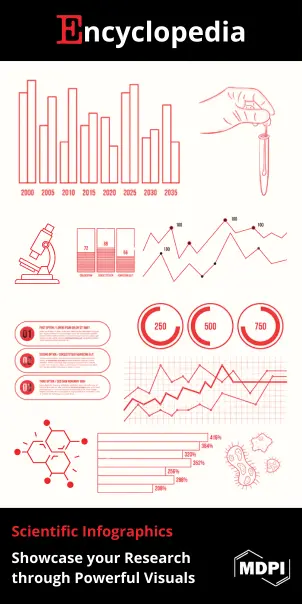You're using an outdated browser. Please upgrade to a modern browser for the best experience.

Submitted Successfully!
Thank you for your contribution! You can also upload a video entry or images related to this topic.
For video creation, please contact our Academic Video Service.
| Version | Summary | Created by | Modification | Content Size | Created at | Operation |
|---|---|---|---|---|---|---|
| 1 | Wagdy Mohamed Eldehna | + 726 word(s) | 726 | 2021-12-23 07:17:07 | | | |
| 2 | Nora Tang | Meta information modification | 726 | 2021-12-24 01:59:53 | | |
Video Upload Options
We provide professional Academic Video Service to translate complex research into visually appealing presentations. Would you like to try it?
Cite
If you have any further questions, please contact Encyclopedia Editorial Office.
Eldehna, W. Recent Drugs Approved for Breast Cancer Management. Encyclopedia. Available online: https://encyclopedia.pub/entry/17519 (accessed on 22 December 2025).
Eldehna W. Recent Drugs Approved for Breast Cancer Management. Encyclopedia. Available at: https://encyclopedia.pub/entry/17519. Accessed December 22, 2025.
Eldehna, Wagdy. "Recent Drugs Approved for Breast Cancer Management" Encyclopedia, https://encyclopedia.pub/entry/17519 (accessed December 22, 2025).
Eldehna, W. (2021, December 23). Recent Drugs Approved for Breast Cancer Management. In Encyclopedia. https://encyclopedia.pub/entry/17519
Eldehna, Wagdy. "Recent Drugs Approved for Breast Cancer Management." Encyclopedia. Web. 23 December, 2021.
Copy Citation
Among all cancer types, breast cancer (BC) still stands as one of the most serious diseases responsible for a large number of cancer-associated deaths among women worldwide, and diagnosed cases are increasing year by year worldwide. For a very long time, hormonal therapy, surgery, chemotherapy, and radiotherapy were used for breast cancer treatment. However, these treatment approaches are becoming progressively futile because of multidrug resistance and serious side effects.
breast cancer therapy
organic synthesis
mechanistic insights
1. Eribulin
Eribulin (Figure 1) is a synthetic ketone analog of the macrocyclic chemotherapeutically active halichondrin B derived from the sea sponge Halichondria okadai. Eribulin is a potent mitotic inhibitor with a unique mechanism of action as an inhibitor of microtubule dynamics. Eribulin received its FDA approval in 2010 to manage the metastatic breast cancer in patients who have received at least two prior chemotherapy regimens for late-stage disease [1].

Figure 1. FDA-approved drugs for the management of different human breast malignancies.
2. Everolimus
Everolimus (Figure 1), a derivative of the natural macrocyclic lactone sirolimus, is an orally bioavailable inhibitor of mTOR. On 20 July 2012, the U.S. FDA approved Everolimus for the treatment of post-menopausal women with advanced HR+/HER2− breast cancer. It is worth mentioning that Everolimus has been approved also for tuberous sclerosis complex-associated partial-onset seizures (in 2018), progressive, nonfunctional gastrointestinal and lung neuroendocrine tumors (in 2016), and advanced pancreatic neuroendocrine tumors (in 2011), as well as being the first approved pediatric-specific dosage form for the management of a rare pediatric brain tumor called subependymal giant cell astrocytoma [2][3][4].
3. Neratinib
Neratinib (Figure 1), a 4-anilinoquinoline-based orally bioavailable kinase inhibitor, is an irreversible pan-ErbB inhibitor of EGFR, HER2, and HER4 targeting the intracellular domain, which results in reduced phosphorylation and downstream pathways activation. Neratinib has been recently FDA- and EMA-approved for the extended adjuvant treatment of early stage HER2-positive BC [5].
4. Palbociclib
Palbociclib (Figure 1) is a pyrido[2,3-d]pyrimidin-7-one derivative which acts as a selective CDK4/6 inhibitor. On 3 February 2015, the FDA granted accelerated approval of Palbociclib (in combination with letrozole) for postmenopausal women with advanced breast cancer, then in 2016 Palbociclib was approved for treatment of HR+/HER2− metastatic BC. Notably, Palbociclib was the first-in-class CDK 4/6 inhibitor approved by the FDA [6].
5. Ribociclib
Ribociclib (Figure 1) is a pyrrolo[2,3-d]pyrimidine-based potent selective inhibitor of cyclin-dependent kinases (CDKs) 4 and 6. In 2017, the FDA approved Ribociclib for treatment of patients with HR+/HER2− metastatic BC. One year later, it was additionally approved for HR+/HER2− advanced breast cancer [7].
6. Tucatinib
Tucatinib (Figure 1) is an orally bioavailable HER2 tyrosine kinase inhibitor. On 17 April 2020, the FDA granted an approval for tucatinib, in combination with Trastuzumab and capecitabine, for the management of patients with advanced unresectable or metastatic HER2-positive BC [8].
7. Anastrozole
Anastrozole (Figure 1) is a reversible, nonsteroidal inhibitor of the aromatase enzyme that is taken orally. Anastrozole is an essential anticancer drug that is indicated as an adjuvant remedy in the treatment of HR+ BC in postmenopausal women at early stages [9].
8. Ixabepilone
Ixabepilone (Figure 1), a semisynthetic analog of epothilone B, stabilizes the microtubules which are essential for cell division via suppression of the dynamic of microtubules (aβ-II and aβ-II). Hence, it arrests the cell cycle in the G2-M phase, induces tumor cell apoptosis and inhibits tumor cell proliferation. In 2007, Ixabepilone was granted an FDA approval for the treatment of patients with locally advanced or aggressive metastatic BC [10].
9. Fulvestrant
Fulvestrant (Figure 1) is a synthetic estrogen receptor and an aromatase inhibitor. It decreases the amount of estrogen in the BC cells through binding to estrogen receptors which leads to estrogen receptor deformation [11].
10. Lapatinib Oral-Active
Lapatinib (Figure 1), a synthetic quinazoline derivative, is an orally active reversible ErbB1 and ErbB2 tyrosine kinase receptor inhibitor that possesses antineoplastic activity towards breast cancer [12].
11. Pertuzumab
Pertuzumab is a recombinant humanized monoclonal antibody that targets HER2-positive BC which can inhibit the proliferation of human tumor cells [3]. The most common side effects of Pertuzumab include hair loss, low white blood cell count, rash, diarrhea, fatigue, nausea, and peripheral neuropathy (tingling in hands and feet and numbness) [13].
12. Alpelisib
Alpelisib (Figure 1) is a phosphatidylinositol 3-kinase (PI3K) inhibitor that impedes the growth of tumor cells. Alpelisib is used in combination with fulvestrant (Faslodex®) for treatment of postmenopausal women with a certain type of metastatic BC [14].
13. Talazoparib
Talazoparib (Talzenna®, Figure 1) belongs to a class of drugs called PARP inhibitors used for treatment of local advanced or metastatic HER2-negative BC women with a BRCA1 or BRCA2 mutation [15].
References
- Pedersini, R.A.; Vassalli, L.A.; Claps, M.B.; Tulla, A.B.; Rodella, F.B.; Grisanti, S.B.; Amoroso, V.B.; Roca, E.B.; Simoncini, E.L.C.; Berruti, A.B. Eribulin in heavily pretreated metastatic breast cancer patients in the real world: A retrospective study. Oncology 2018, 94 (Suppl. S1), 10–15.
- Houghton, P.J. Everolimus. Clin. Cancer Res. 2010, 16, 1368–1372.
- Zureick, A.H.; McFadden, K.A.; Mody, R.; Koschmann, C. Successful treatment of a TSC2-mutant glioblastoma with everolimus. BMJ Case Rep. CP 2019, 31, e227734.
- Peri, M.; Fazio, N. Clinical evaluation of everolimus in the treatment of neuroendocrine tumors of the lung: Patient selection and special considerations. A systematic and critical review of the literature. Lung Cancer Targets Ther. 2020, 11, 41–52.
- Nasrazadani, A.; Brufsky, A. Neratinib: The emergence of a new player in the management of HER2+ breast cancer brain metastasis. Future Oncol. 2020, 16, 247–254.
- Liu, M.; Liu, H.; Chen, J. Mechanisms of the CDK4/6 inhibitor palbociclib (PD 0332991) and its future application in cancer treatment (Review). Oncol. Rep. 2018, 39, 901–911.
- Hortobagyi, G.N. Ribociclib for the first-line treatment of advanced hormone receptor-positive breast cancer: A review of subgroup analyses from the MONALEESA-2 trial. Breast Cancer Res. 2018, 20, 123.
- Kulukian, A.; Lee, P.; Taylor, J.; Rosler, R.; de Vries, P.; Watson, D.; Forero-Torres, A.; Peterson, S. Preclinical activity of HER2-selective tyrosine kinase inhibitor tucatinib as a single agent or in combination with trastuzumab or docetaxel in solid tumor models. Mol. Cancer Ther. 2020, 19, 976–987.
- Gobbi, S.; Rampa, A.; Belluti, F.; Bisi, A. Nonsteroidal aromatase inhibitors for the treatment of breast cancer: An update. Anticancer Agents Med. Chem. 2014, 14, 54–65.
- Dumontet, C.; Jordan, M.A.; Lee, F.F.Y. Ixabepilone: Targeting βIII-tubulin expression in taxane-resistant malignancies. Mol. Cancer Ther. 2009, 8, 17–25.
- Bergh, J.; Jonsson, P.E.; Lidbrink, E.K.; Trudeau, M.; Eiermann, W.; Brattstrom, D.; Lindeman, J.P.O.; Wiklund, F.; Henriksson, R. FACT: An open-label randomized phase III study of fulvestrant and anastrozole in combination compared with anastrozole alone as first-line therapy for patients with receptor-positive postmenopausal breast cancer. J. Clin. Oncol. 2012, 30, 1919–1925.
- Sardesai, S.D.; Storniolo, A.M. Lapatinib: An oral dual tyrosine kinase inhibitor for HER-2-positive breast cancer. Womens Health 2015, 11, 281–294.
- Smith, M.B.; Reardon, J.; Olson, E.M. Pertuzumab for the treatment of patients with previously untreated her2-positive metastatic breast cancer. Drugs Today 2012, 48, 713–722.
- André, F.; Ciruelos, E.; Rubovszky, G.; Campone, M.; Loibl, S.; Rugo, H.S.; Iwata, H.; Conte, P.; Mayer, I.A.; Kaufamn, B.; et al. For the SOLAR-1 study group. Alpelisib for PIK3CA-mutated, hormone receptor–positive advanced breast cancer. N. Engl. J. Med. 2019, 380, 1929–1940.
- Exman, P.; Barroso-Sousa, R.; Tolaney, S.M. Evidence to date: Talazoparib in the treatment of breast cancer. OncoTargets Ther. 2019, 12, 5177–5187.
More
Information
Subjects:
Oncology
Contributor
MDPI registered users' name will be linked to their SciProfiles pages. To register with us, please refer to https://encyclopedia.pub/register
:
View Times:
632
Revisions:
2 times
(View History)
Update Date:
24 Dec 2021
Notice
You are not a member of the advisory board for this topic. If you want to update advisory board member profile, please contact office@encyclopedia.pub.
OK
Confirm
Only members of the Encyclopedia advisory board for this topic are allowed to note entries. Would you like to become an advisory board member of the Encyclopedia?
Yes
No
${ textCharacter }/${ maxCharacter }
Submit
Cancel
Back
Comments
${ item }
|
More
No more~
There is no comment~
${ textCharacter }/${ maxCharacter }
Submit
Cancel
${ selectedItem.replyTextCharacter }/${ selectedItem.replyMaxCharacter }
Submit
Cancel
Confirm
Are you sure to Delete?
Yes
No




